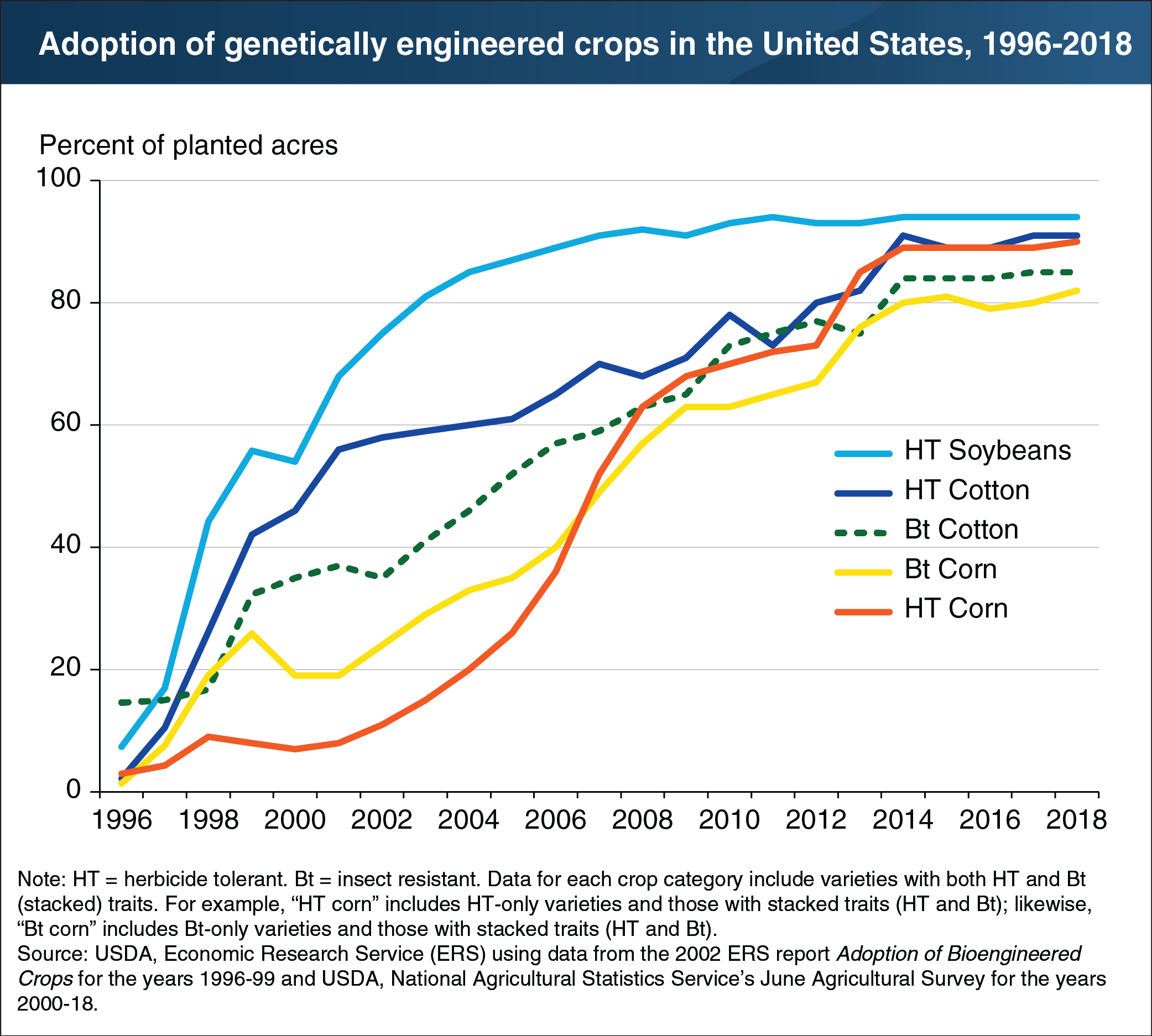Genetically engineered soybean, cotton, and corn seeds have become widely adopted
- by Seth J. Wechsler
- 10/25/2018

In 2018, U.S. farmers planted over 90 percent of soybean, cotton, and corn acres with genetically engineered (GE) seeds. Most of these GE seeds are herbicide tolerant (HT), insect resistant (Bt), or both (stacked). The share of U.S. soybean acres planted with HT seeds rose from about 7 percent in 1996 and plateaued at 94 percent in 2014. The share of HT cotton acreage expanded from about 2 percent in 1996 to a peak of 91 percent in 2014. The share of HT corn acreage grew relatively slowly at first, but reached about 90 percent in 2018. Meanwhile, the share of Bt corn acreage grew from 1 percent in 1996 to 82 percent in 2018. The share of Bt cotton acres also expanded, from nearly 15 percent in 1996 to 85 percent in 2018. Demand for GE seeds is affected by the severity of pest infestations, output prices, input prices, and the commercialization of new GE traits. For example, the introduction of new varieties of Bt corn resistant to corn rootworm and earworm may have contributed to the increase in Bt corn adoption rates since 2003. This chart appears in the ERS data product Adoption of Genetically Engineered Crops in the U.S., updated July 2018.
We’d welcome your feedback!
Would you be willing to answer a few quick questions about your experience?

